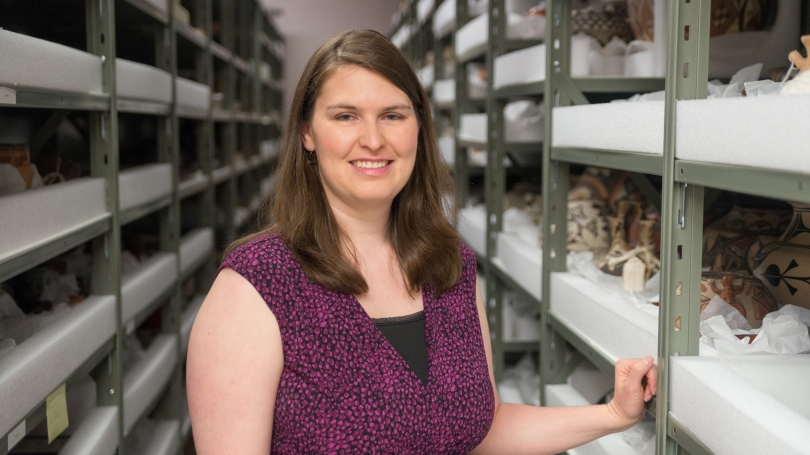As a teaching museum, the Hood is dedicated to both creating learning opportunities for students and assisting the teaching and research efforts of faculty. "We think about how objects are a locus for questions and research," says Amelia Kahl, coordinator of academic programming at the Hood. "An object can lead you into many different areas of study and areas of human production and life. You can think about where something was made, how it was made. Its materials can tell you something about natural resources in the area and about production and technology techniques. What it depicts can talk to you about religion and belief systems. Who made it can talk to you about social stratification. Who paid for it can open up questions about politics, family structure, government, press and media, and how meanings are conveyed that way. So there are a lot of different questions that can come from a single object."
Museum staff members often work with faculty on projects that showcase, as well as enhance, faculty teaching and research. This year's The Women of Shin Hanga exhibition of Japanese prints was curated by Allen Hockley, associate professor of art history and an expert on Japanese print culture. Sienna Craig, associate professor of anthropology, used a Hood Mellon Fellowship to create a list of objects that augmented her lessons when she held class sessions at the museum.
"A lot of faculty do their own teaching when they bring classes here, and that's what we prefer because we feel that's the way it's best integrated," says Kahl. "The more time they've spent with the objects, the better they can connect it to the larger themes of their course." Kahl recalls a professor who wrote an essay for a Hood catalogue observing that the experience caused him for the first time to think about how art and geology intersected. "I think there are other faculty who find it hard to see the connection to their field if they don't traditionally work with art or objects," says Kahl, "but it's there."
